Let me show you my discernment method of Acer pictum(mono) and its companions, which is arranged for main 8 species for the 12 species mentioned above.
In case of trees whose leaves ;
no hair on its underside at all
1. middle tree, leaves not so large, deeply lobed
....1-year-twigs non hair : f. dissectum
....(1-year-twigs hairy : f. piliferum)2. small tree, leaves small glaucous on its underside : subsp. glaucum
no hair but pilose along the main veins underside
3. middle tree, leaves not so large, deeply lobed
....1-year-twigs non hair : f. connivens
....(1-year-twigs hairy : f. puberulum)no hair but brownish thick hairs only at basal tufts of main veins underside
4. big tree, large leaves, shape semi-circular & cordate,
.....3-5, middle- to shallow lobed: subsp. mayrii5. middle-big tree,large leaves, shape circular, 5-7-, middle- to shallow lobes : subsp. savatieri
no hair or pilose along the main veins underside
6. big tree, leaves polymorphic, 5-7, middle- to shallow lobed
....fruit size middle : subsp. mono
....(fruit size large : subsp. mono f. magnificum)wholly covered with short upright hairs underside
7. big tree, leaves large, shape circular, semi-circular & cordate, 5-7-, middle- to shallow lobed
....1-year-twigs non hair : f. ambiguum
....(1-year-twigs hairy : f. pulvigerum)wholly pilose underside, (and also pilose along the main veins upperside)
8. small-middle tree, leaves small middle, deeply lobed : subsp. taishakuense
From what is mentioned above, it could be derived that the hairs character of leaves underside is the key factor for species discernment. That is to say, other visible factors such as shape of the leaves have no mean for discernment because of their wide variety.
Consequently, subsp. taishakuense and f. ambiguum will be discerned at first.
Secondly what has leaves whose color is glaucous on its underside should be subsp. glaucum.
The group of f. dissectum wlii be discerned into 4 species by the points hairy or no hair both along the main veins underside and on the 1-year-twigs.
The rest of discernment is discerning of subsp. mayrii, subsp. savatieri and subsp. mono.
In case that its 1-year-twigs is hairy, it should be subsp. mono.
On discernment between subsp. mayrii and subsp. savatieri, shape of leaves can be used, the former semi-circular the latter circular. When you find brownish thick hairs only at basal tufts of main veins underside in them, they should be subsp. savatieri.Speaking of the distribution, subsp. mayrii and subsp. mono can be seen in Hokkaido, northern Honshu and Japan Sea side of Honshu. subsp. savatieri can be seen mainly in Central Honshu.
Well, let me show you some images of them.
A. pictum (mono) in Japan contains 8 main companions. We can find out 4 companions, such as ambiguum, savatieri, dessectum and connivens in Shizuoka Pref. Each companion has various kinds of leaf-forms respectively and some leaves are similar to those of other companions, so it seems difficult for us to discern only by the leaf-forms. From the view of botany, the appearance of hairs of the upper and the lower surfaces of leaves are thought important.
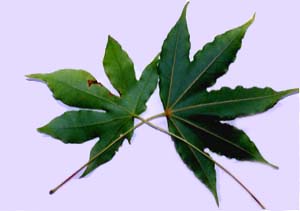 |
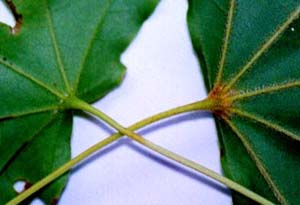 |
| We can observe hairs on the veins of the leaf in case of f. connivens (right) and non-hair in case of f. dissectum (left). | |
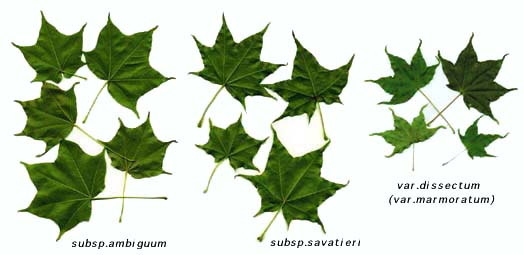

In these samples, samaras angles of subsp.savatieri (center) are wider than those of subsp.ambiguum (left).
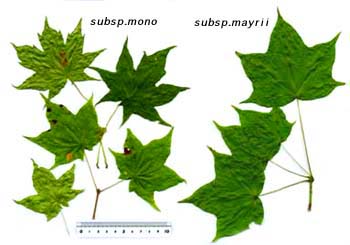
mono (left):1-year twigs pubescent with the base of the petioles of leaves, and yellowish brown.
mayrii (right):1-year twigs quite galabrous, often purplish red and glaucous. Bright green in young vigorous shoots.
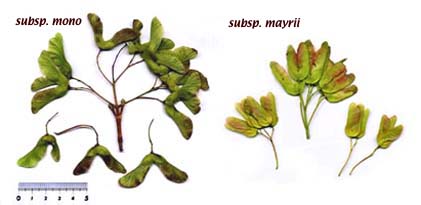
Seed comparison of mono & mayrii
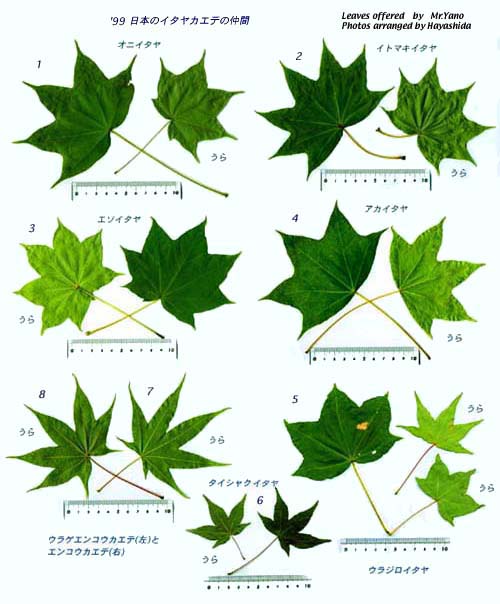
| |
|
|
|
| |
|
|
|
| |
|
|
|
| |
|
|
|
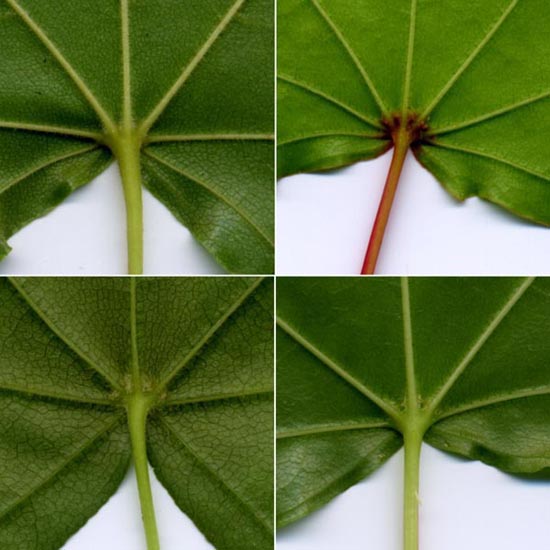
Short hairs recognized on the whole lower surface of leaves in subsp.ambiguum (upper left),
brownish hairs recognized only at the base of veins in subsp.savatieri (upper right).
mono (glabrum)(lower left):often pilose beneath along main veins.
mayrii (lower right) :glabrous beneath except the base of main veins and the apex of the petioles
Maples & Japanese maples : Species discernment